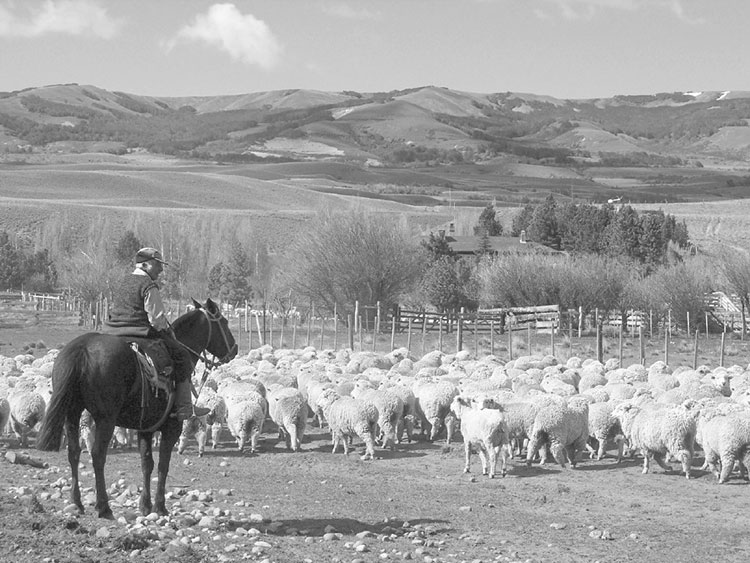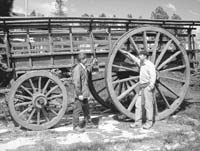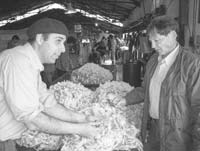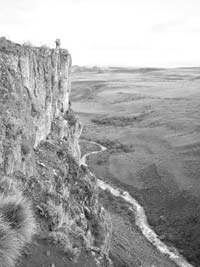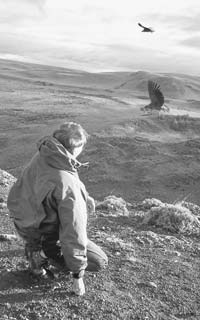Surprises in Chile’s northern Patagonia
This item appears on page 87 of the April 2008 issue.
(Second of two parts)
I had the opportunity in October 2007 to visit Chile’s northern Patagonia, an area still today far from the usual swath of tourists sojourning in South America. Little did I realize the bounty that would unfold in the second half of my 6-day exploration of the region.
After visiting Termas de Puyuhuapi and Laguna San Rafael Glacier, which I reported on in my last column, my amigo Scott and I stopped in the booming regional center of Coyhaique, the only town in Chile located on the eastern side of the Andes.
We had arranged to meet up with our hosts for the next three days, the Galilea brothers, Sebastian and Juan Andrés. What we would be doing and the full range of what the Galileas were involved with was still much a mystery at that point. It would be revealed that their portfolio included large-scale ranching, a highly regarded fly-fishing lodge catering almost exclusively to North Americans, another just-completed luxury lodge, real estate and general tourism.
Boom town: Coyhaique
Coyhaique, population approximately 25,000, is the now-thriving regional center for northern Patagonia and is Alaska-like in personality, appearance and, to some degree, climate.
The region is known for its expansive cattle and sheep ranches, with some of the latter producing world-class merino wools. The region is also a well-recognized mecca for fly-fishing, with its endless array of trout-filled streams, rivers and lakes yielding trophy browns and rainbows. Seasonal adventure-oriented tourism is also developing at a steady pace.
Before we departed on a tour of the Simpson River Valley with Juan Andrés Galilea, Sebastian took us to lunch at Casino Bomberos, a completely unpretentious local restaurant featuring traditional regional fare. It has long been a popular venue for all strata of the local population. My corvina la plancha (grilled sea bass) was an excellent value at about $8.
Pollution unknown
The skies and the waters of this small slice of scenic heaven remain unpolluted at levels hard for the rest of civilization to comprehend. The region around Coyhaique is Northern Patagonia’s “big sky” country, with vistas that seem to stretch far beyond the horizon.
In this favored land there are even cooperative ventures between the large ranches on both sides of the Chile/Argentina border. The politicos in Buenos Aires and Santiago who, to say the least, historically have not been overly neighborly could learn much from observing.
Tour preview
What I did not realize during my visit was that I was going to be experiencing most of the prime highlights of a new one-week tour of the region, “Spectacular Northern Patagonia Adventure,” now offered by Chilean Special Journeys.
The highlights of the tour include crossing the border into Argentina to visit a huge estancia that has recently become famous for producing the highest-quality merino wool in South America and, perhaps, the world. This tour is the only way to visit this impressive property that is otherwise not open to tourists.
Activities include observing a sheep-sheering demonstration, watching highly trained sheepdogs work the flocks, getting a behind-the-scenes look at the production of their high-quality wool and taking a fascinating tour of the manor house, which is also a living museum of all things gaucho and more. The tour also visits some of the birdlife-rich lagoons on the ranch.
I enjoyed the estancia so much, it was difficult to leave.
Two of the touring days feature the scenery, flora and fauna of several regional national parks. This includes a boat crossing to view the awesome Cerro Castillo, whose rugged Andes formations reach into the clouds, offering one of the most impressive scenic views in South America. Optional hiking experiences for all fitness levels are available.
Also included is a full-day cruise to the utterly magnificent Laguna San Rafael Glacier (on which I reported in detail last month) — definitely a major tour highlight.
Condormania
In addition, the tour includes an early-morning 4-wheel-drive adventure to a truly special sanctuary. On private Galilea family lands, unmarked and not accessible to the public, is arguably the finest condor-viewing location on the planet.
From the edge of sheer cliffs overlooking a river valley and providing vistas as far as the eye can see and the mind can imagine, we viewed the giant, 3-meter-wingspan flying fortresses both above and below us in what I can describe only as a mind-blowing experience.
Simultaneously humbled and exhilarated, I departed feeling truly fortunate to be among the few to have experienced this rare gift of nature. Future tour members who are devoted birders undoubtedly will think they have died and gone to heaven.
Later the same day the tour visits an ancient Tehuelches Indian cemetery as well as one of the Galilea estancias for lunch and to meet some of the family. Open-range and mountain horseback riding, which I enjoyed tremendously on my visit, and other ranch experiences are available after lunch.
The tour accommodates at both the new, luxurious Cinco Rios Lodge, outside of Coyhaique and overlooking the Simpson River Valley stretching to the Andes, and the lodge at Estancia Zorro, the midsummer base for the Galilea fly-fishing operation.
The tour also features chefs at both venues who specialize in the fine local and regional cuisine. Wine is included with all lodge meals.
Tour operation
This new 7-day/6-night northern Patagonia adventure tour operates in 2008 with Thursday departures commencing in mid-September through December. Operating with a minimum of two people and a maximum of eight, the cost is $2,550 to $3,680 per person, double occupancy, including all meals and wine. Round-trip air from Santiago to Balmaceda is an additional cost, generally about $275.
Importantly, the tour can be combined easily with additional touring in southern Patagonia and all other Chilean destinations, including Easter Island.
Bookings for the tour are made with Santiago-based Chilean Special Journeys (888/345-6077, visit www.chileanspecialjourneys.com).
Keck's Beyond the Garden Wall
So intoxicatingly pristine on so many levels
that many who journey from afar
in search of an antidote for civilization
awaken from dormancy the pioneer within
— Randy effusing on the transcendent allure of northern Patagonia

